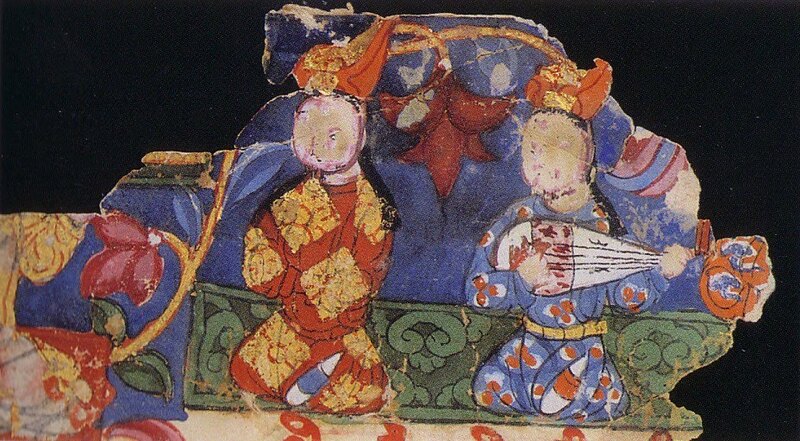Manichaean book fragment
Type:
Illuminated manuscripts
Date:
Ninth to tenth century
Location or Findspot (Modern-Day Country):
China
Dimensions:
11.2 × 17.2 cm
Description:
Manichaeism, a dualist religion founded by the Iranian prophet Mani (216–ca. 274) in the Sasanian Empire, was one of the main rivals to Christianity in the third to seventh century, before the spread of Islam. This fragment is from a Uighur codex written in a Sogdian script and comes from an illuminated anthology of religious texts. The recto of the fragment shows Manichaean priests sitting on their heels, working outdoors in scribal duty below fruit-bearing trees. They hold pens and prepare to write on vertically ruled paper. Some hold two pens, which may indicate that they applied different colors to the page with distinct pens (there are two script colors on the verso of this fragment, for example). On the verso, musicians are visible at the top of the fragment. One notable feature of Manichaean illuminated manuscripts is that text and image are arranged at 90 degrees to each other.
Relevant Textbook Chapter(s):
3,
5
Repository and Online Resources:
• This fragment is now in the Museum für Asiatische Kunst der Staatlichen Museen zu Berlin - Preußischer Kulturbesitz.
Tags:
Artistic production,
Manichaean,
Music,
Central Asian


